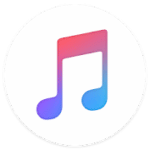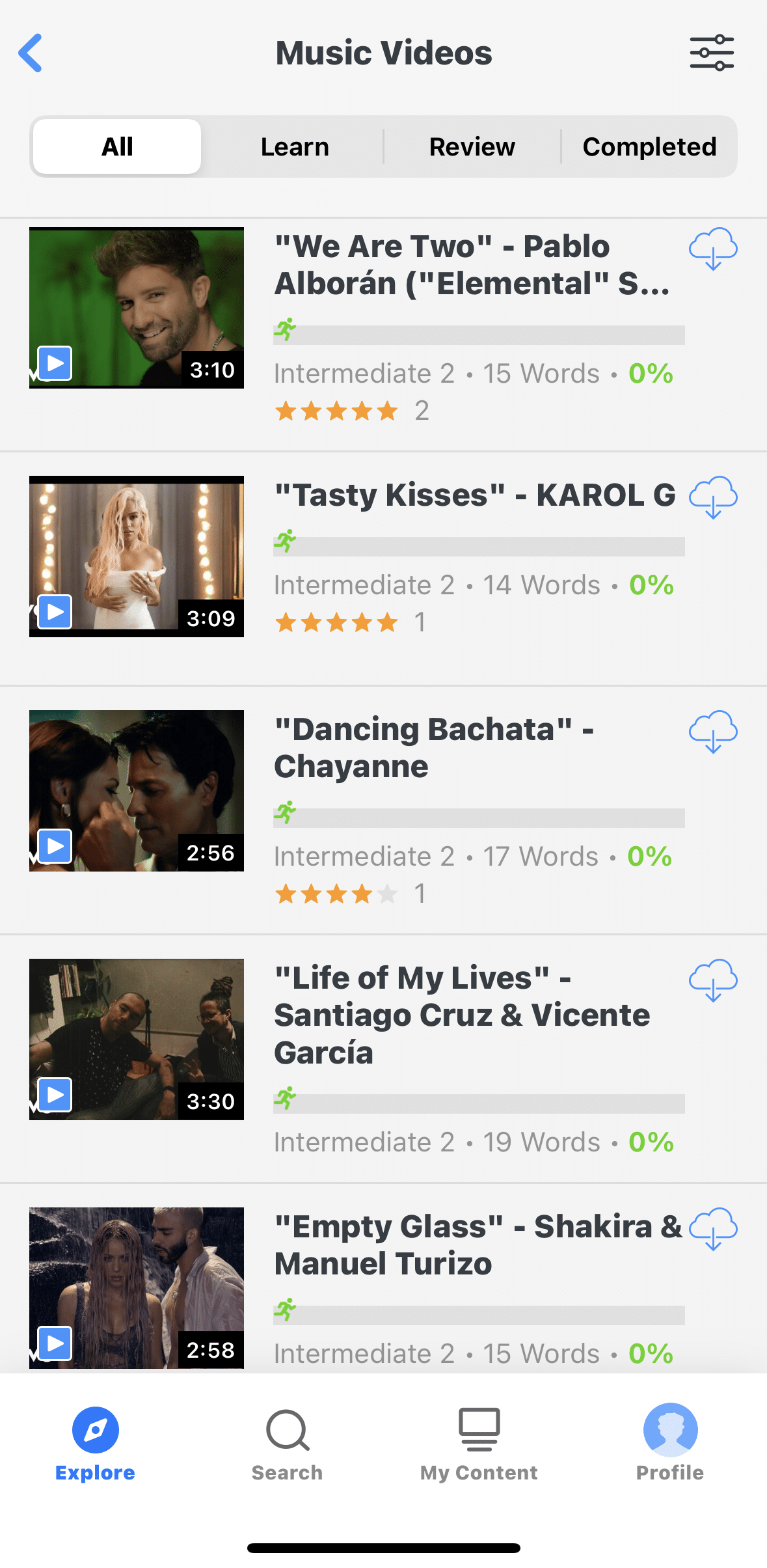
9 Tips for Learning Language Through Music
Listening to music is so much more than just a fun way to pass the time.
Music is an integral part of many of our lives, so why not find some learner-friendly tracks and learn a new language through songs?
Read on for why learning language through music is a good idea, followed by 9 tips you can use to successfully add some tunes to your study routine!
Download: This blog post is available as a convenient and portable PDF that you can take anywhere. Click here to get a copy. (Download)
Contents
- Why You Should Incorporate Songs into Your Language Study
- Learn a Language Through Songs with These 9 Groovy Tips
- And One More Thing...
Why You Should Incorporate Songs into Your Language Study
- Learning with music is a fun way to break up your study session without halting your learning. Listening to music in your target language can give you the refreshing break you need from your normal study methods while still upping your language skills.
- Popular songs will be well-known in their countries of origin, giving you another connection to local culture and a great topic of conversation for interactions with native speakers. For instance, Korean students will have no problem finding someone to discuss BTS with!
- Songs are also easy to memorize, so you can use them to remember grammar rules and vocabulary. The combination of rhythmic lyrics and a melody makes songs much easier to remember than words from a textbook.
- For example, beginning Portuguese and Spanish students can reinforce some key vocabulary with “Meu Menino/Minha Menina” (“My Boy/My Girl”) by Luan Santana featuring Belinda. Luan Santana (the man) sings in Portuguese, while Belinda Peregrín sings in Spanish.
- Music is also easy to use wherever you are—it’s one of the most portable language learning tools imaginable! It’s easy to load onto your phone and listen in your car, on a plane, in line or wherever you are when the desire to practice your target language strikes.
- You can easily listen to music in short bursts. Songs are just a few minutes long, and listening to one isn’t much of a commitment. Because it’s so quick and simple, you could listen several times throughout the day.
- Finally, songs use repetition, which is great for reinforcing vocabulary. Repetition is often the key to language learning, after all. For instance, anyone who has heard “Despacito” (“Slowly”) by Luis Fonsi can probably remember the titular word even if they don’t speak Spanish!
Learn a Language Through Songs with These 9 Groovy Tips
1. Pick the right song
Choosing the right song is the key to success. There are some key points to take into consideration.
The first thing to consider is whether you find a song enjoyable. You want to pick a song you truly like listening to. The more you like it, the more likely you are to listen to it, and the more you listen to it, the more likely you are to learn from it.
You should also consider whether the song is level-appropriate. If a song is much simpler than your current skill set, you probably won’t learn as much as you could. However, if a song is way too hard, everything can blur together and you might end up learning next to nothing.
Ideally, you should understand some but not all of the song the first time you listen—then it’s probably at an appropriate level.
To select songs to use for your language studies, consider:
- Earworms. These are really catchy songs that wriggle their way deep into your brain and pop up when you least expect them. Look for modern pop music with repetitive lyrics and cute choruses, or even television commercials and viral advertisements in your target language—like this annoying little number in Spanish.
- Children’s music. These songs are repetitive and easy to learn, and they’re designed for the ultimate new language learners—kids! Children’s songs will embed proper syntax and pronunciation in your mind while teaching you essential grammar and vocabulary.
- Modern music. Modern songs provide important pop culture knowledge, which is vital for carrying casual conversations, understanding humor and following television programs, among other things. Anything by artists of our current generations will likely touch on political injustices, social issues, trends, modern relationship dynamics and more.
- Traditional music. While older music can be hard to follow due to antiquated language, it can also be a goldmine of cultural information as well as more complex and poetic vocabulary. You’ll also likely hear remnants of these musical styles in the more modern music of your target language.
- Music that you love. It doesn’t matter if you love to listen to it or dance to it—if the song makes you smile or makes your booty shake, use it for language learning. The more addictive you find your study music, the more fun you’ll have listening to it and learning from it.
- Music you know well. Listen to translations or unique renditions of songs you already love, or find songs with similar melodies. Familiarity with the tune, lyrics or meaning will give you a head start learning language with that particular song.
It can also be a good idea to look for bilingual songs that use your target language in the lyrics. Check out our comprehensive list of bilingual songs for ideas!
2. Keep your target song handy
Keeping your target song with you wherever you go makes it easier to squeeze in a quick learning session. Because learning through music requires repetition, being able to listen whenever the mood strikes can increase your learning potential.
Download the song to your phone, your computer and anywhere else you might listen to music. You may wish to use one of these handy resources:
Purchasing your target song on iTunes can make it easier to save it on your phone, computer or favorite device. And you’ll never have to worry about ads interrupting your immersive language experience!
The song selection is hard to beat, so you’ll find plenty of great options in your target language. You can download individual songs or entire albums so that you have plenty of content at your fingertips.
Not only can you listen to your favorite songs on Spotify, you can even craft your own language learning playlist! There are also plenty of existing foreign language playlists that can help learners find and enjoy great songs in their target languages.
If you’re using a free Spotify account, your playlist will be interrupted with some ads, so try to tune out the English if you’re looking for a more immersive language exercise. If you can’t ignore the ads, try translating them in your head for a little extra practice!
3. Use the lyrics for added support
Even native speakers can’t always understand all the words in songs. While misheard lyrics can be hilarious, they can also create headaches for language learners.
That’s why there’s no shame in using the written lyrics to support your musical studies. Not only can they help make individual words more clear, but you can use them to study even when you’re not listening to the song.
There are a ton of resources for accessing lyrics in numerous languages:
This site provides lyrics in multiple languages, so you can often view the original lyrics and the translation side-by-side, making it easy to check the meaning of any word or phrase.
If you don’t see your target song, you can request a translation and a friendly translator may help you out. If you’re feeling particularly ambitious, you could even offer song translations yourself as an additional way to practice your target language.
FluentU is an online language learning platform that turns authentic videos, including songs and music videos, into language lessons. Each clip comes with interactive captions so you can click on any word to see its definition, example sentences and more.
You can watch other videos that contain a specific word, or you can add it to a personalized flashcard deck for further study. The FluentU program is available in 10 languages both on desktop and mobile devices (iOS and Android).
And if you’re looking for some song recommendations or a place to start in your target language, you can check out: 30 popular Spanish tunes, 23 French hits, 19 great Chinese songs, five Japanese karaoke classics or four German musical artists.
 Genius is more than just song lyrics. Annotations provide additional details on inspiration and meaning, allowing you to understand lyrics in greater depth. Even the singers and songwriters add comments sometimes!
Genius is more than just song lyrics. Annotations provide additional details on inspiration and meaning, allowing you to understand lyrics in greater depth. Even the singers and songwriters add comments sometimes!
Conveniently, Genius often links to the music videos of the songs on YouTube (at the very bottom of the page) so that you can listen as you read the lyrics. For instance, Russian students may enjoy the popular song “Медина” (“Medina”) by Jah Khalib.
Since Genius doesn’t provide translations, it’s best for more advanced students, though anyone who uses it will find some great learning material.

For a more challenging option, you can also try a game in which some words are omitted from the text and you must supply them as you listen. There are four game levels, so it’s appropriate for any level of language learning.
 On LyricsGaps, songs are labeled with the difficulty level. You can also set your level to easily find learning options fit for you.
On LyricsGaps, songs are labeled with the difficulty level. You can also set your level to easily find learning options fit for you.
During gameplay, you’ll be given the text of the song with some missing words, and you’ll select the missing lyrics from a drop-down menu as you listen. You can also click any of the provided lyrics to see a word’s definition.
LyricsGaps even allows you to challenge your fellow language-learning friends. There are popular language options such as Chinese, French and Russia as well as less common options like Basque and Visayan.

There are millions of songs, so you can find popular ones in countless languages like Spanish, Japanese or Tagalog. Korean students, for example, might enjoy singing along with “택시로 5분” (“5 Minutes by Taxi”) by Mimi Sisters.
4. Look up new vocabulary words
Even if you understand your target song for the most part, looking up words you’re unfamiliar with can expand your vocabulary and ensure you understand the song fully.
If you’re using printed lyrics, read through them, jot down any unfamiliar words and then look them up. Then, incorporate them into your study routine to make sure they stick.
If you’re not using lyrics, you’ll need to rely more on your ears. When you hear a word you don’t know, write down what you think you hear and look it up after. If the meaning doesn’t seem to make sense in context, try listening again—you may have misheard something.
You can also maintain vocabulary lists for all your favorite songs to give yourself reference material and track how much you’ve learned over time.
5. Learn one chunk at a time
When you first start using music to learn a language, approaching an entire song at once may be challenging. One great technique to learn and enjoy a song in your target language is to break it into manageable chunks.
The chorus is an ideal segment to start with. Because the chorus is repeated, you’ll hear it often, so learning it right away can make it easier to enjoy the song.
Basically, to learn in chunks, listen for a set length of time (15 seconds, for example) or choose a small section of the printed lyrics. Look up unfamiliar words and grammar and then study them until you understand everything in that section. Repeat with new sections until you know the whole song!
6. Sing along
Finally, an excuse to sing at the top of your lungs!
Singing along is definitely fun, but there’s more to it than that. When you’re singing along in your target language, you’re also practicing your pronunciation and reinforcing the vocabulary you’ve learned from the song.
Not confident yet? Try lip-syncing first. It will get you used to thinking of what lyrics come next and it will probably help you transition toward singing your heart out, too.
If you have friends who are studying the same language as you, even better! You can get together for foreign language karaoke, or just enjoy a language learning binge on your next road trip.
7. Watch music videos
Not only do you get great visuals with the music (and possible hints at the meaning), you may also have the opportunity to watch the singer’s mouth, which could help you understand the lyrics better and learn how to replicate the sounds yourself.
Some places for finding music videos include:
YouTube contains a lot of the most popular (and not so popular) international hits, so you can probably find the music video of the song you’re looking for.
YouTube language learning also comes with some major bonuses!
You can interact with other fans in the comments section or simply see what they have to say. And many videos offer English subtitles, like the French song “Balance Ton Quoi” (“Expose Your What”) by Angèle, for those who don’t mind adult language.
On Vimeo, you can encounter plenty of foreign language content just by searching “official music video,” or you can search the title of your target song.
Either way, Vimeo has some great options, such as “Oasis” (“Oasis”) by La Chica, which Spanish students may enjoy.
8. Dance along
Wait… If the goal is to listen to your target language, why dance?
Well, studying can be a pretty sedentary activity. However, studies indicate that physical movement can aid learning, so if you’re sitting still, you might be missing out!
The next time you watch the music video of your target song, try to pick up as many dance moves as possible. Once you have a handle on the moves, try to dance while you listen!
Not only is it a fun, active way to break up your study session, but associating words and phrases with specific movements might make the vocab easier to remember.
9. Interact with other music fans
While music is great for listening practice and building vocabulary, it doesn’t provide great writing practice. But you can let your passion for music fuel your writing practice!
There are avid music fans all over the world, and connecting with them online can be a great way to practice your writing skills and make new friends.
To find fan groups, try searching “music fans” in your target language. You can even search the name of a performer/group plus the word “fans” to try to find people who share your musical preferences.

Here are some music subreddits for popular languages:
- “Música en Español” (“Music in Spanish”)
- “La musique française“ (“French music”)
- “Italian Music”
So if you find the right subreddit, join in the conversation to practice reading and writing in your target language. If no one is talking about the music you like, start your own thread to launch the conversation!
And if you can’t find a dedicated music page for your target language, you can also discuss music in other foreign language subreddits. Music isn’t the focus of the Japanese subreddit, but that doesn’t mean you can’t bring it up!
If it sounds like music to your ears to learn a language through songs, try these tips to get started!
There’s no groovier way to learn a new language.
Download: This blog post is available as a convenient and portable PDF that you can take anywhere. Click here to get a copy. (Download)
And One More Thing...
Love learning languages through music? Then you'll love FluentU.
With FluentU, you'll learn real languages—as they're spoken and sung by native speakers. FluentU has a wide variety of videos as you can see here:
And for us music lovers, there’s an entire category dedicated to music videos! It covers everything from fresh pop hits to educational singalongs, Disney numbers, and familiar holiday tunes.
Keep exploring from there and you’ll find all kinds of interesting videos related to music, like behind-the-scenes interviews with your favorite artists.
Of course, every language learner knows the frustration of trying to keep up with fast-paced lyrics while still learning! That’s why FluentU’s interactive captions let you tap on any word in the lyrics to instantly see an image, definition, audio and useful examples.
Didn't catch something? Go back and listen again. Missed a word? Hover your mouse over the subtitles to instantly view definitions. Then hit play to keep going without ever missing a beat.
You can learn all the vocabulary in any song with FluentU's "learn mode." Swipe left or right to see more examples for the word you’re learning.
And FluentU always keeps track of vocabulary that you’re learning. It gives you extra practice with difficult words—and reminds you when it’s time to review what you’ve learned. You get a truly personalized experience.
Start using the FluentU website on your computer or tablet or, better yet, download the FluentU app from the iTunes or Google Play store. Click here to take advantage of our current sale! (Expires at the end of this month.)












